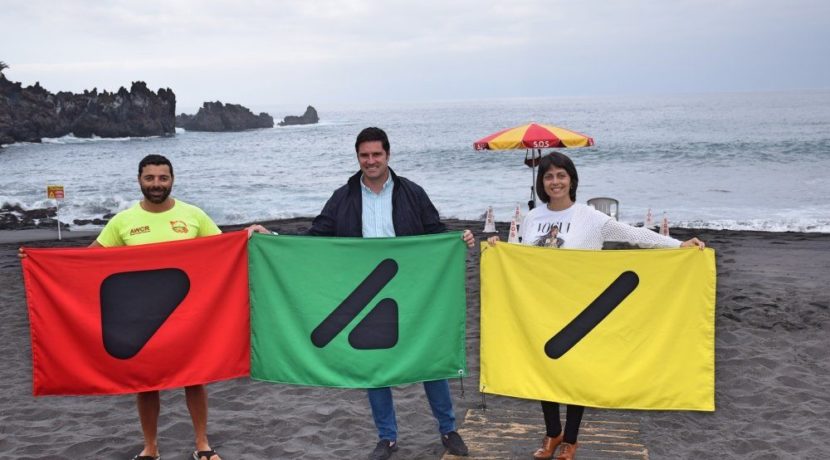La Arena beach in Tenerife, the first inclusive beach for people with color blindness in Spain.
Through the ColorADD codes on the beach flags, colors are identified for people suffering from color blindness.
The beach of La Arena, Tenerife, the most decorated beach with the Blue Flag of the province of Santa Cruz de Tenerife and the most decorated of the Canary Islands, goes a step further in the services it provides to its users and already counts among them with the inclusion of the ColorADD signs codes in its beach flags (green, yellow and red) suitable for people with problems to differentiate all or some colors (color blindness or dyschromatopsia). It is the first beach in Spain that has this system among its services.
The code is called ColorADD, which is a graphic color identification system designed for people suffering from color blindness. The code is based on five graphic symbols, which correspond to the three pigment colors, plus white and black, whose combination represents a wide range of different colors and shades. ColorADD is a unique, inclusive and universal code, based on three monochromatic symbols that represent the primary colors, which allows the interpretation of color.
Both the Mayor, Emilio Navarro and the Councilor for Tourism, Luz Goretti Gorrín, along with the company manager, West Coast Rescue, SL, responsible for the maintenance of the municipal beaches, deployed the three flags that from now on will wave on the beach according to the conditions of it.
Emilio Navarro, Mayor of Santiago del Teide, indicates that “this is the first step of a project that aims to provide all the beaches of the municipality with this signage so that they can enjoy these spaces with the best possible quality, providing This is the social inclusion of this segment of the population that has grown exponentially in recent times. We owe all this to the indefatigable work and in favor of improving our beaches that the human team of the company in charge of the maintenance of our beaches headed by Adolfo and José and his team “.
According to data from the current world population (some 7,663,000,000 people), a total of 613 million men and slightly more than 38 million women suffer some degree of color blindness and, therefore, difficulty in interpreting colors, which means a serious problem if one takes into account that up to 90% of the current communication is based on color.



